
Beautiful buttery croissant
During Passover, Sydney and I have had numerous requests for gluten free croissants. We have created recipes for our gluten free clients, friends, and family members. I must admit the individuals who are gluten free seem to grow each year. My nephew was born with Celiac disease.
Celiac disease is a digestive disease that damages the small intestine and interferes with absorption of nutrients from food. People who have celiac disease cannot tolerate gluten, a protein in wheat, rye, and barley. Gluten is found mainly in foods but may also be found in everyday products such as medicines, vitamins, and lip balms. Creating a pâte croissant, gluten free, was a labor of love for Sydney and I!
Pâte à Croissant Dough, Gluten Free:
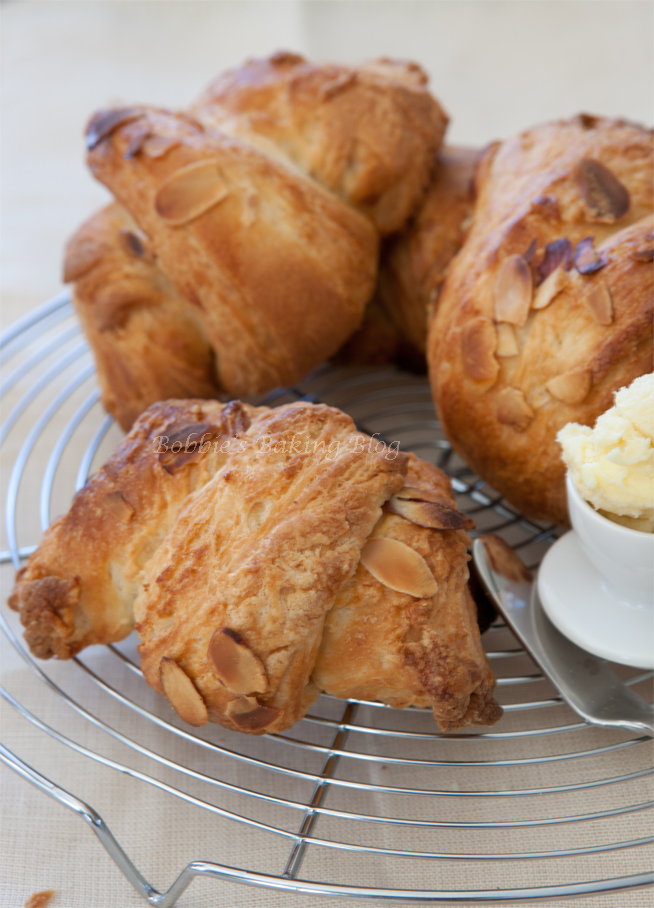
The additions of almonds and almond cream is always special.
244 grams/ 1-cup whole milk, warm about 35 degrees C/ 95 degrees F
110 grams/1/2-cup heavy cream, warm about 35 degrees F/ 95 degrees F
29.9 grams/ 1.3 ounces fresh yeast or 13 grams dry yeast/ 1 Tablespoon, plus ¼ -teaspoon
4 grams/ 1- teaspoon sugar
18 grams/1 Tablespoon salt
50 grams/ ¼-cups brown sugar, granulated white sugar may be subsituted
300 grams/ 1-7/8-cup sweet brown rice flour
120 grams/ 3/4-cup sorghum flour
120 grams/ 1/3- cup rice or corn starch
9 grams/ 1-tablespoon xanthan gum
Beurrage Package
340 grams butter, cold
10 grams/ 3 1/2-teaspoons rice flour
21 grams/ 1-Tablespoon sorghum flour
Prepare your mise en place. In a small bowl whisk the flour and set aside covered.
Détrempe:
If using dry yeast: proof the yeast with the 110grams/ 1/2 cup warm cream, 4 grams/ 1-teaspoon sugar, and yeast. Adding the yeast to the warm cream and then the sugar allowing it to sit for about 7 minutes.
If using fresh yeast:
a. Dissolve 1 teaspoon sugar in 11o grams/ 1/2 cup cream, warmed to 90°F – 95°F
b. Add crumbled Cake Yeast to sugar solution.
c. Stir yeast until completely dissolved.
d. Let mixture stand until yeast begins to foam vigorously (5 – 10 minutes).
e. Add mixture to remaining ingredients.
In the bowl of a standing mixer add the yeast mixture, the gluten free flour mixture (reserving 60 grams/ 1/2-cup flour if needed), and the brown sugar whisk together, by hand, and then whisk in salt.
Using your dough hook on low speed add the warm milk until the dry ingredients are moistened. Raise the speed to medium (#4) and amalgamate for about 4 minutes. The dough should be silky, smooth, pulled away from the sides of the bowl, and will still cling to your fingers slightly.
Place the dough in a 4-quart bowl 0r dough bucket that has been lightly greased with butter or cooking spray. Cover the bowl with the lid or plastic wrap. Place the dough in a room temperature room (26 degrees C/80 degrees F ) for 30 minutes. If the room is colder preheat your oven to 150 degrees, turn it off, and the oven should register at 26 degrees C/ 80 degrees F. Place the dough in the oven.
Using a greased rubber spatula, gently fold the dough.
Cover and place in the refrigerator for at least 2 hours to 8 hours.
The Beurrage:
Cube the butter into dice size pieces. I found the best way to combine the butter with the GF flour, is to place the cold cube butter and 25 grams of flour in the bowl of your standing mixer on low speed, with the paddle attachment, mix the butter and flour. Once the mixture is amalgamated shape into a 28cm x 28cm, 9×9-inch square (no thicker than 3/8 of inch). The butter should still be cool but workable- about 16 degrees C/ 60 degrees F.
Use it right away, the temperature must be at 16 C/ 60F to laminate properly.
Pâton:
**Laminate the dough
Take the dough from the refrigerator and roll out to 31 x 31 cm/ 12.5 x 12.5 –inches. Place the barrage (butter square) diagonally in the center of détrempe (dough) using the back of knife mark the dough at the corners of the butter, remove the butter at form flaps where the marks are. Roll the flaps a little. Now moisten the flaps slightly place the butter back into the center, diagonally. Wrap the butter by securely overlapping the flaps slightly. Wrap the pâton in plastic film and allow it to rest in the refrigerator for 30 minutes, but no longer.
** The laminating method is one Rose Levy Beranbaum uses, I believe it works best.
First Turn:
Place the dough seems side up on a floured marble board. Keep your work surface lightly floured, gently roll the pâton into a long rectangle about 50 cm/20 inches long by 18 cm/ 7inches wide. Brush off the flour from the dough’s surface and give it a business letter fold (folding into thirds). Wrap the folded dough in plastic film, lay on a parchment paper lined ½ baking sheet, and allow it to rest in the refrigerator for 40 minutes. Mark the paper to keep track of the turns. I generally like to complete a total of 6 turns, but a minimum of 4 turns is fine. The dough will let you know!
Second turn through four or sixth turns: (you may do up to six turns if the dough allows)
Start with a clean work surface that has been lightly floured. Position the dough so that the spine is faced to your left (like a book) and press down the edges of the dough with a rolling pin to keep them straight. (The upper part tends to roll out more than the bottom part). Roll and fold the détrempe the exact same way, but turn it over occasionally to keep the seams and edges even. Be sure to roll into all four corners of the détrempe, and use a pastry scraper to even the edges. A total of four turns should be completed; the third turn can have a double fold equaling four turns.
To Shape the Croissants:
Begin with a cleaned flour workspace.
Roll out the dough to 60 cm/24-inchs by 43cm/ 17-inches.
Brush off all the flour. Fold the dough lengthwise so it ‘s 15cm/6-inche/ by 56cm/22-inches. Using a croissant cutter cut across the long side. Brush off all the flour. Fold the dough over lengthwise.
Damp a cloth to keep your hands moisten while stretching the triangles.
Using a croissant cutter (or a pizza cutter) begin to cut, if using a pizza cutter cut a triangle cut through both layers all the way to the other side. Open the folded triangles, so for every full cut there are two triangles formed.
Shape one triangle at a time, keeping the remaining triangles covered with plastic wrap.
Use the scrapes of dough to place in the top of triangle, keep them covered as well.
Forming the Croissant:
1. Cut the triangle.
2. Unfold the triangle carefully, cut along the fold to separate.
3. Gently stretch the triangle twice it’s original length about 23 cm/ 9-inches long.
4. Enclose a piece of scrape dough to pump up the middle.
5. With the point facing you roll the dough towards you, gently moving your hand down out to the side.
6. Curve the pointed ends of the rolled croissant to form the traditional shape.
Egg Wash Glaze:
50 grams/1 whole egg
14 grams/ 1-tablespoon heavy cream, half and half, milk or water
Sugar for sprinkling, optional
Baking the Croissants:
Preheat the oven to 218 to 232 degrees C/ 425 degrees F, arrange the oven racks so one rack to the lower and upper positions. Prepare the egg wash and very lightly with a pastry brush, brush the egg wash onto the croissants.
Open the oven, spritz the oven generously with spray bottle of water and quickly close the door. Open the oven door again, slide the croissant sheets into oven and re spritz. Turn down the oven temperature to 240 degrees C/ 400 degrees F. after about 10 minutes rotate the croissant sheets. Reduce the oven temperature to 191 degrees C/ 375 degrees F and continue to bake the croissants till deep golden brown, internal temperature should register at 99 degrees C/ 210 degrees F. (about 8 more minutes). They will finish baking while they cool.
Cooling the Croissant:
Once the croissants have achieved the color and correct internal temperature, remove from the oven and transfer to a cooling rack for about 20 to 30 minutes.
Serve.

Voila!

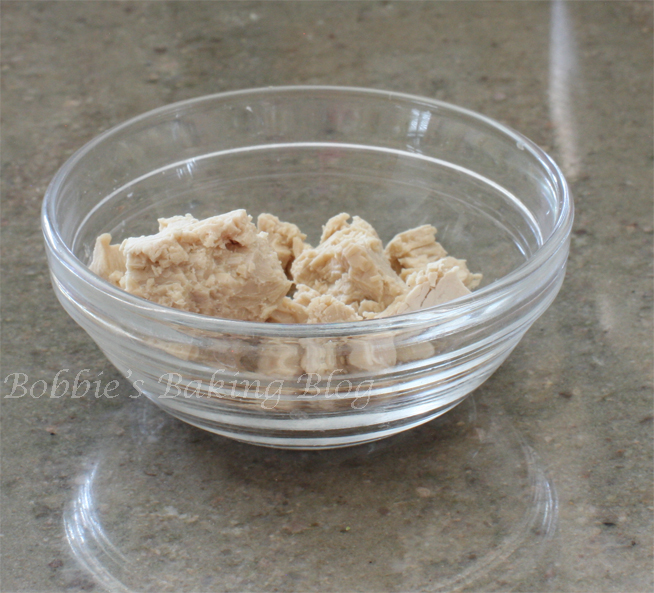
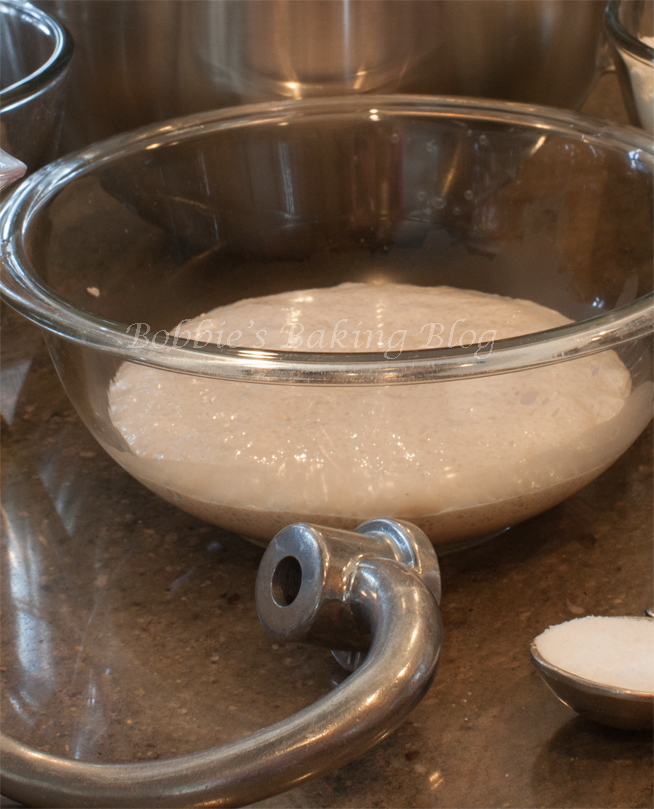
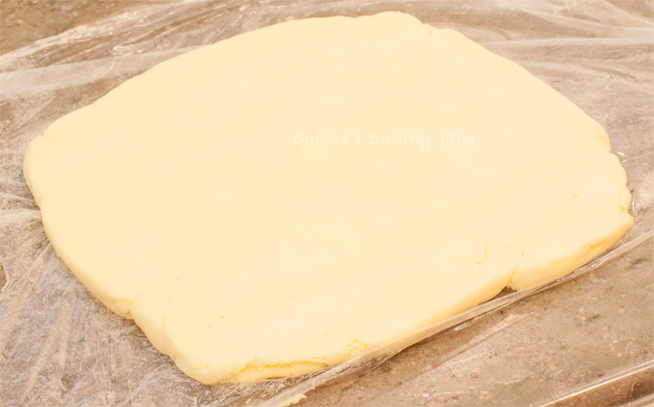
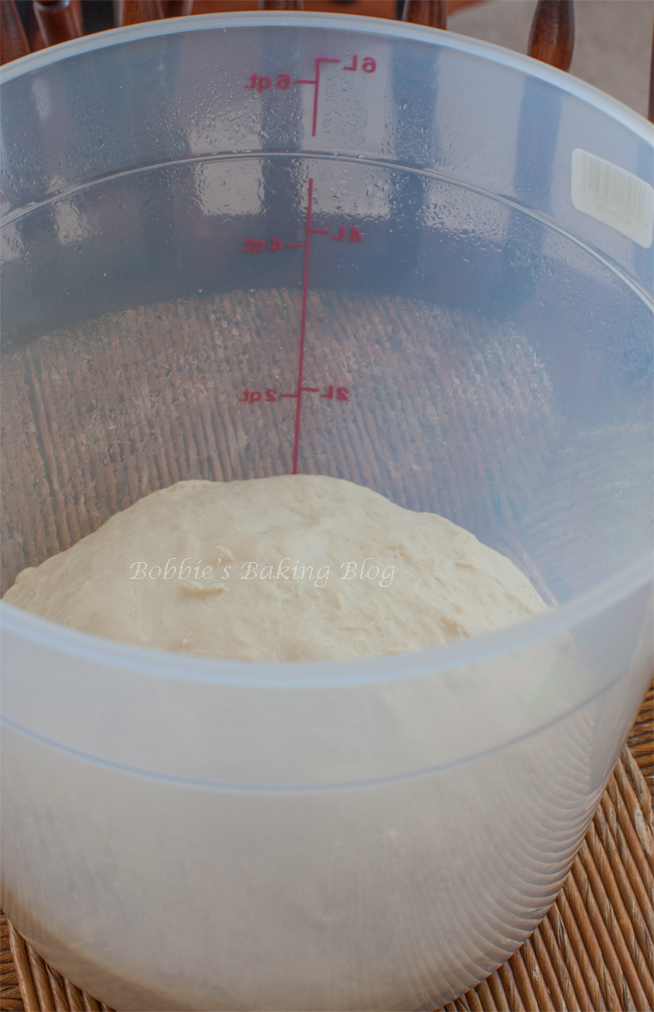

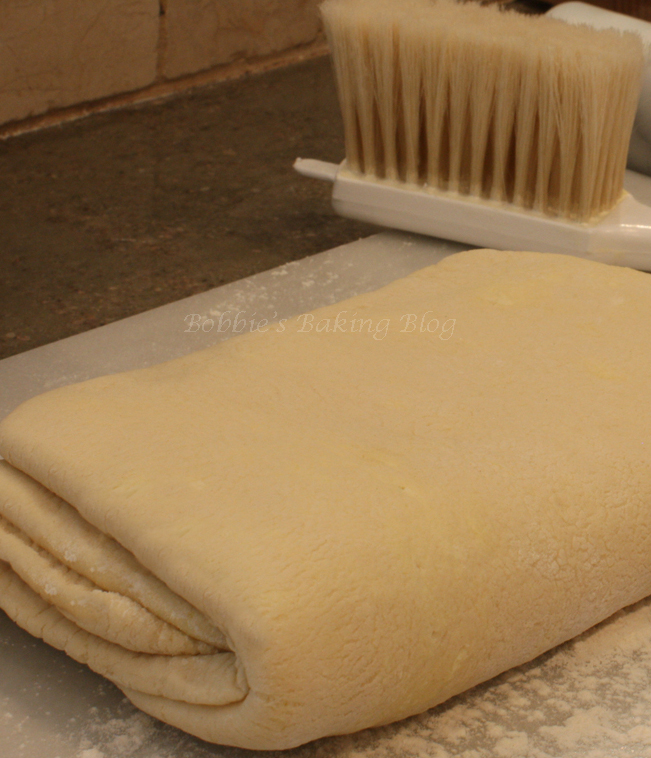

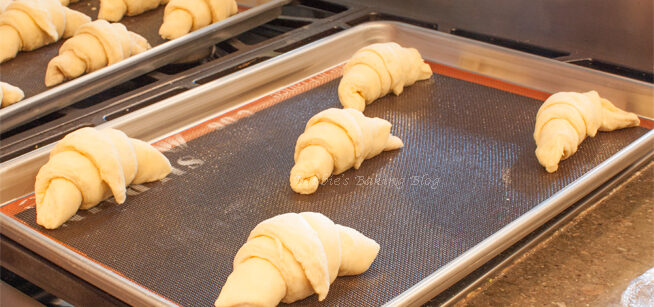
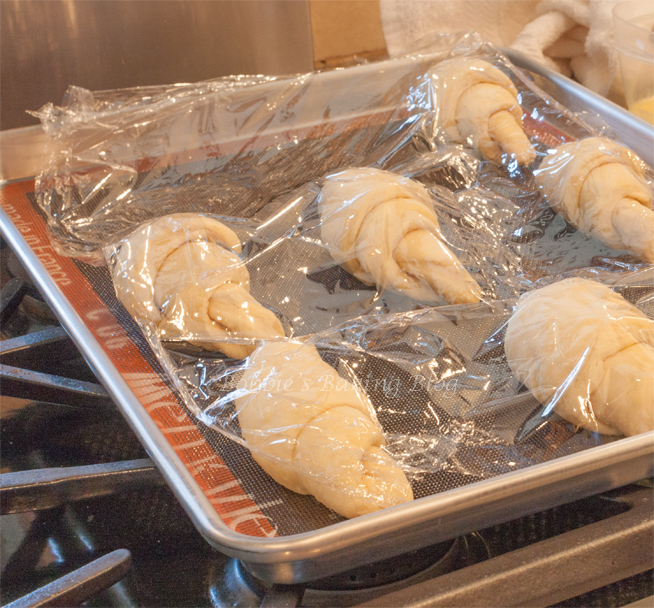








Hi, these loo amazing and i would like to make them tonight. Im wondering if you have ever substited something for the sorghum flour.
Cant wait to try this recipe! What is Beurrage?
it is difficult to read instruction, with the page flashing everything the picture change.
thank you